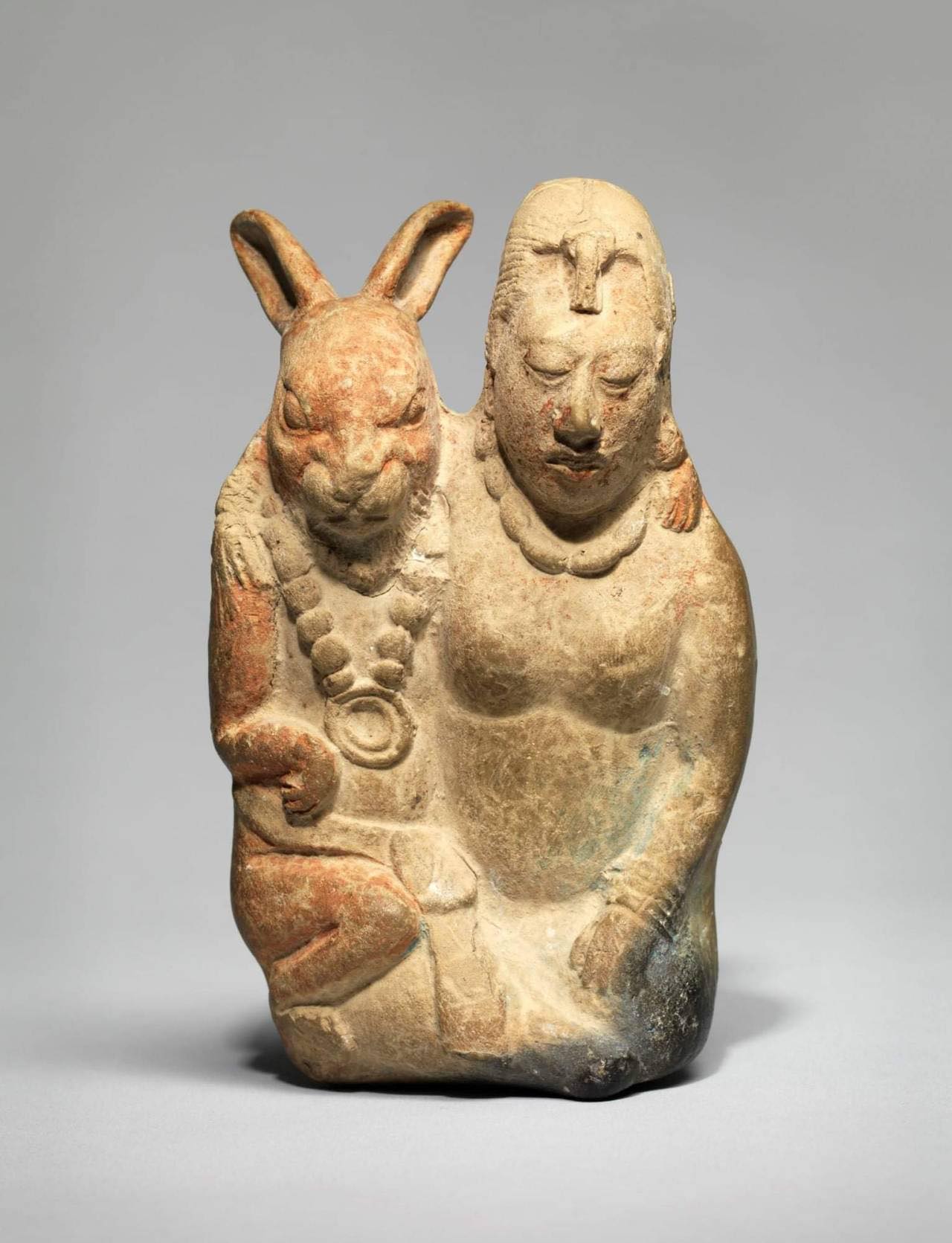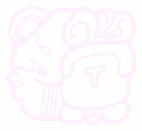Los Maya-Mam y su mundo naturaleza animal
マムと動物世界
Los Maya-Mam y su mundo naturaleza animal
グアテマラ農耕民マム社会:中央アメリカ の高地に位置するグアテマラのマヤ系先住民であるマム人は、トウモロコシとインゲン豆を栽培する農耕民 であり、現在ではトウモロコ シの栽培限界以上の高地ではジャガイモを生産する。農耕用にウマ、運搬用にラバ、ロバなどが飼育されているが、ウシはブタとならんで肥育・乳牛用である。 高地ではヒツジやヤギの飼育が盛んで、ヒツジは羊毛とタンパク源として利用されてきた。しかし、これらの動物はスペイン征服期以降に持ち込まれた家畜であ り、現地の神話に登場する動物表象はシカやウサギ、サルである、後者は、トリックスターとしての役割を果たしている。感覚と現地社会のコスモロジーとの関 係において興味深いことは、鈍重なものとして表象される家畜に比べて、野生動物は非常に勘が鋭く知性的であるゆえに同胞として擬人化される傾向が強いこと である(従って、家畜は植民者の表象になりやすい)。また近年の持続的開発やエコロジー思想の普及は、そのような野生表象のなかに、自然との調和を理想と するマヤ先住民の姿を投影させている。媒介動物病対策のターゲットが家畜であるという意味でも、家畜と野生動物との対比は、あきらかに現代を生きるマムの 人たちのコスモロジーを反映している。
◆第1ステップ マヤ系先住民であるマム 人の古代から現代にいたる動物表象のあり方について現地調査をする。とくに動物の隠喩表象に対する民俗 語彙研究と、マヤ先住民に広くみられる方位概念の関係について解明すると同時に、それらのデータの生態学的解釈や含意について検証する。
◆第2ステップ 前年度の調査データの分 析を、現地研究者との共同のもとで、マヤの神話およびスペイン征服者たちが記載した生物地理学のテキス トとの対応関係や当時の生態環境の再構成に関する資料と付き合わせて、現地調査を続行する。
画像をクリックすると(単独で面積比で4倍に拡大します)
●マ ヤのコスモロジー(原文は、カナダ歴史博物館)
| The ancient Maya
believed in recurring cycles of creation and destruction and thought in
terms of eras lasting about 5,200 modern years. The current cycle is
believed by the Maya to have begun in either 3114 B.C. or 3113 B.C. of
our calendar, and is expected to end in either A.D. 2011 or 2012. Maya cosmology is not easy to reconstruct from our current knowledge of their civilization. It seems apparent, however, that the Maya believed Earth to be flat and four-cornered. Each corner was located at a cardinal point and had a colour value: red for east, white for north, black for west, and yellow for south. At the centre was the colour green. Some Maya also believed that the sky was multi-layered and that it was supported at the corners by four gods of immense physical strength called "Bacabs". Other Maya believed that the sky was supported by four trees of different colours and species, with the green ceiba, or silk-cotton tree, at the centre. Earth in its flat form was thought by the Maya to be the back of a giant crocodile, resting in a pool of water lilies. The crocodile's counterpart in the sky was a double-headed serpent - a concept probably based on the fact that the Maya word for "sky" is similar to the word for "snake". In hieroglyphics, the body of the sky-serpent is marked not only with its own sign of crossed bands, but also those of the Sun, the Moon, Venus and other celestial bodies. |
古代マヤ人は、 創造と破壊が繰り返されるサイクルを信じ
、現代で約 5,200 年続く時代を考えていました。現在の周期はマヤ人によって、暦の紀元前 3114 年か紀元前 3113
年に始まったと信じられており、西暦 2011 年か 2012 年に終わると予想されています。 マヤ文明の現在の知識からマヤの宇宙論を再構築するのは簡単ではありません。しかし、マヤ族が地球は平らで四角いものであると信じていたことは明らかのよ うです。各コーナーは基点に位置し、東は赤、北は白、西は黒、南は黄色という色の値がありました。中心には緑色がありました。 マヤ族の中には、空は何層にもなっていて、その四隅は「バカブ」と呼ばれる計り知れない体力を持つ 4 人の神によって支えられていると信じていた人もいます。他のマヤ族は、空は異なる色と種の 4 本の木で支えられており、その中心には 緑のセイバ(シルクコットンの木) があると信じていました。 平らな形の地球はマヤ人によって、睡蓮の池の中で休んでいる巨大なワニの背中であると考えられていました。空のワニの対応物は双頭の蛇でした。これはおそ らくマヤ語で「空」を表す言葉が「蛇」を表す言葉に似ているという事実に基づいた概念です。象形文字では、天蛇の体には、それ自身の交差した帯の印だけで なく、太陽、月、金星、その他の天体の印も付けられています。 |
| Heaven was believed to have 13
layers, and each layer had its own god. Uppermost was the muan bird, a
kind of screech-owl. The Underworld had nine layers, with nine
corresponding Lords of the Night. The Underworld was a cold, unhappy
place and was believed to be the destination of most Maya after death.
Heavenly bodies such as the Sun, the Moon, and Venus, were also thought
to pass through the Underworld after they disappeared below the horizon
every evening. Very little is known about the Maya pantheon. The Maya had a bewildering number of gods, with at least 166 named deities. This is partly because each of the gods had many aspects. Some had more than one sex; others could be both young and old; and every god representing a heavenly body had a different Underworld face, which appeared when the god "died" in the evening. |
天には13の層があると信じられており、各層には独自の神がいます。一
番上にはオオコノハズクの一種であるムアン鳥がいた。アンダーワールドには 9 つの層があり、対応する 9
つの夜の支配者がいました。冥界は寒くて不幸な場所であり、ほとんどのマヤ族が死後に向かう場所であると信じられていました。太陽、月、金星などの天体
も、毎晩地平線の下に消えた後、冥界を通過すると考えられていました。 マヤのパンテオン についてはほとんど知られていません。マヤ族には驚くほど多くの神々がおり、少なくとも 166 の名前の付いた神がいました。それは一つには、それぞれの神々が多くの側面を持っていたからです。複数のセックスをした人もいました。若者も老人もいるか もしれません。そして、天体を表すすべての神は異なる冥界の顔を持っており、夕方に神が「死んだ」ときにそれが現れました。 |
| Some Maya sources also speak of
a single supreme deity, called Itzamná, the inventor of writing, and
patron of the arts and sciences. His wife was Ix Chel, the goddess of
weaving, medicine and childbirth; she was also the ancient goddess of
the Moon. The role of priests was closely connected to the calendar and astronomy. Priests controlled learning and ritual, and were in charge of calculating time, festivals, ceremonies, fateful days and seasons, divination, events, cures for diseases, writing and genealogies. The Maya clergy were not celibate, and sons often succeeded fathers. All Maya ritual acts were dictated by the 260-day Sacred Round calendar, and all performances had symbolic meaning. Sexual abstinence was rigidly observed before and during such events, and self-mutilation was encouraged in order to furnish blood with which to anoint religious articles. The elite were obsessed with blood - both their own and that of their captives - and ritual bloodletting was a major part of any important calendar event. Bloodletting was also carried out to nourish and propitiate the gods, and when Maya civilization began to fall, rulers with large territories are recorded as having rushed from one city to the other, performing bloodletting rites in order to maintain their disintegrating kingdoms. |
いくつかのマヤ情報源には、イツァムナ と呼ばれる単一の最高神、
文字の発明者、芸術と科学の守護者についても言及されています。彼の妻は
織物、医療、出産の女神イクス・チェルでした。彼女は古代の月の女神でもありました。 祭司の役割は暦と 天文学と密接に関係していました。祭司は学習と儀式を管理し、時間の計算、祭り、儀式、運命の日と季節、占い、行事、病気の治療、執筆と系図を担当した。 マヤの聖職者は独身ではなく、息子が父親の跡を継ぐことが多かった。 すべてのマヤの儀式行為は260 日の 神聖円暦によって規定されており、すべてのパフォーマンスには象徴的な意味がありました。このような行事の前後には性的禁欲が厳しく守られ、宗教用品に油 を注ぐ血を供給するために自傷行為が奨励された。エリートたちは自分自身の血と捕虜の血の両方に執着しており、儀式的な瀉血は重要な暦行事の主要な部分を 占めていました。瀉血は神々に栄養を与え、なだめるためにも行われ、マヤ文明が崩壊し始めると、広大な領土を持つ支配者たちが、崩壊しつつある王国を維持 するためにある都市から他の都市へ駆けつけ、瀉血の儀式を行ったことが記録されている。 |
| For the Maya, blood sacrifice
was necessary for the survival of both gods and people, sending human
energy skyward and receiving divine power in return. A king used an
obsidian knife or a stingray spine to cut his penis, allowing the blood
to fall onto paper held in a bowl. Kings' wives also took part in this
ritual by pulling a rope with thorns attached through their tongues.
The blood-stained paper was burned, the rising smoke directly
communicating with the Sky World. |
●マヤ族にとって、神と人々の両方が生き残るためには、人間のエネル
ギーを空に送り、その見返りに神の力を受け取るために血の犠牲が必要でした。王は黒曜石のナイフやアカエイの背骨を使ってペニスを切り、その血をボウルに
入れた紙の上に落としました。王の妻たちも舌に棘を付けたロープを引っ張ってこの儀式に参加しました。血の付いた紙が燃え上がり、立ち上る煙がスカイワー
ルドと直接通信した。 |
| Human sacrifice was perpetrated
on prisoners, slaves, and particularly children, with orphans and
illegitimate children specially purchased for the occasion. Before the
Toltec era, however, animal sacrifice may have been far more common
than human - turkeys, dogs, squirrels, quail and iguana being among the
species considered suitable offerings to Maya gods. |
人身御供は囚人、奴隷、特に子供たちに対して行われ、孤児や非嫡出の子
供たちはこの機会のために特別に購入された。しかし、トルテカ時代以前は、人間よりも動物の犠牲がはるかに一般的であった可能性があります。七面鳥、犬、
リス、ウズラ、イグアナなどは、マヤの神々への捧げ物に適していると考えられていました。 |
| Priests were assisted in human
sacrifices by four older men who were known as chacs, in honour of the
Rain God, Chac. These men would hold the arms and legs of a sacrificial
victim while the chest was opened up by another individual called a
nacom. Also in attendance was the chilam, a shaman figure who received
messages from the gods while in a trance, and whose prophecies were
interpreted by the assembled priests. |
司祭たちは、雨の神であるチャックに敬意を表して、 チャックとして
知られる4人の年配の男性によって人身御供の援助を受けました。これらの男性は、ナコムと呼ばれる別の人物によって胸が開かれる間、犠牲者の腕と脚を保持
します。また 、トランス状態で神からのメッセージを受け取り、集まった司祭たちによってその予言が解釈されたシャーマンであるチラムも 出席しました。 |
| The Maya believed that when
people died, they entered the Underworld through a cave or a cenote.
When kings died, they followed the path linked to the cosmic movement
of the sun and fell into the Underworld; but, because they possessed
supernatural powers, they were reborn into the Sky World and became
gods. Death from natural causes was universally dreaded among the Maya,
particularly because the dead did not automatically go to paradise.
Ordinary people were buried beneath the floors of their houses, their
mouths filled with food and a jade bead, accompanied by religious
articles and objects they had used when alive. The graves of priests
contained books. Great nobles were cremated - a practice of Mexican origin - and funerary temples were placed above their urns. In earlier days, nobles had been buried in sepulchres beneath mausoleums. Some Maya even mummified the heads of dead lords. These were then kept in family oratories and "fed" at regular intervals. Following the Spanish conquest, there was a great deal of overlap between Maya and Catholic belief systems. Some archaeologists have suggested that the systems were similar in many respects: both burned incense during rituals; both worshipped images; both had priests; both conducted elaborate pilgrimages based on a ritual calendar. |
マヤ族は、人は死ぬと洞窟やセノーテ
を通って冥界に入るのだと信じていました。王たちが死ぬと、彼らは太陽の宇宙運動と結びついた道をたどり、冥界に落ちました。しかし、彼らは超常的な力を
持っていたため、空の世界に生まれ変わり、神になりました。自然死はマヤ族の間で広く恐れられており、特に死者が自動的に楽園に行くわけではないためだっ
た。一般の人々は家の床下に埋葬され、口には食物と翡翠のビーズが詰められ、宗教的な品物や生前に使用していた品物が添えられていました。司祭たちの墓に
は本が納められていました。 偉大な貴族は火葬され、これはメキシコ発祥の習慣であり、葬儀寺院が彼らの骨壷の上に置かれました。初期の頃、貴族は霊廟の下の墓に埋葬されていました。 マヤ族の中には、死んだ領主の首をミイラ化した人もいます。その後、これらは家族の礼拝堂に保管され、定期的に「給餌」されました。 スペインの征服後、マヤとカトリックの信念体系の間には多くの重複がありました。一部の考古学者は、このシステムは多くの点で類似していると示唆していま す。両方とも儀式中に香を焚きました。どちらも崇拝された像です。どちらも司祭を持っていました。どちらも儀式カレンダーに基づいて精緻な巡礼を行った。 |
| Most Maya today observe a
religion composed of ancient Maya ideas, animism and Catholicism. Some
Maya still believe, for example, that their village is the ceremonial
centre of a world supported at its four corners by gods. When one of
these gods shifts his burden, they believe, it causes an earthquake.
The sky above them is the domain of the Sun, the Moon and the stars;
however, the Sun is clearly associated with God the Father or Jesus
Christ. The Moon is associated with the Virgin Mary. Many Maya are convinced that the mountains which surround them are analogous to the ancient temple-pyramids. Mountains and hills are also thought to be the homes of ancestral deities: elderly father and mother figures who are honoured in the home with prayers and offerings of incense, black chickens, candles and liquor. In many Maya villages, traditional shamans continue to pray for the souls of the sick at mountain shrines. The Maya also believe in an Earth Lord - a fat, greedy half-breed who lives in caves and cenotes, controls all waterholes, and produces lightning and rain. There is also a supernatural belief in the spirits of the forest. Some villages today have four pairs of crosses and four jaguar spirits or balam at the village's four entrances, in order to keep evil away. In agricultural rites, deities of the forest are still invoked, and it is still believed that evil winds loose in the world cause disease and sickness. |
今日、ほとんどのマヤ族は、古代マヤの思想、アニミズム、カトリックか
らなる宗教を信じています。たとえば、マヤ族の中には、自分たちの村が世界の四隅で神によって支えられている儀式の中心地であると今でも信じている人もい
ます。これらの神々の一人が自分の重荷を変えると、地震が起こると彼らは信じています。彼らの上の空は太陽、月、星の領域です。しかし、太陽は明らかに父
なる神またはイエス・キリストと結びついています。月は聖母マリアと結びついています。 多くのマヤ族は、自分たちを取り囲む山々が古代の 寺院のピラミッドに似ていると確信しています。山や丘も祖先の神々の家であると考えられています。年老いた父親と母親の姿は、家の中で祈りを捧げ、お香、 黒い鶏、ろうそく、酒を捧げて祀られています。マヤの多くの村では、伝統的なシャーマンが山の神社で病人の魂のために祈り続けています。マヤ族はまた、大 地の主を信じています。地球の主は、洞窟やセノーテに住み、すべての水場を支配し、稲妻と雨を生み出す、太っていて貪欲な 混血です 。 森の精霊に対する超自然的な信仰もあります。現在、悪を遠ざけるために、村の 4 つの入り口に4 対の十字架と 4 つのジャガーの精霊またはバラムを置いている村もあります 。農耕儀式では今でも森の神々が呼び起こされ、世界に吹き荒れる悪風が病気や病気を引き起こすと今でも信じられています。 |
| Source: https://www.historymuseum.ca/cmc/exhibitions/civil/maya/mmc03eng.html |
Google translator |
| マヤ文明における「うさぎ」は、いくつかの重要な意味や象徴を持っています。以下にその主なポイントをまとめます。 1. 象徴的な意味 豊穣と繁栄: うさぎは繁殖力が強いため、豊穣や繁栄の象徴とされました。農業社会であるマヤにとって、作物の実りや家族の繁栄を象徴する存在でした。 2. 神話と伝説 神話における役割: マヤの神話の中には、うさぎが登場する物語があり、特に「うさぎの神」として知られる存在があります。これらの神話では、うさぎはしばしば知恵や機知を象徴します。 3. 天文学的な関連 天文学との関連: マヤの天文学では、うさぎは月と関連付けられることがあります。特に、月の表面に見える模様がうさぎに似ていることから、月の神話と結びついています。 4. アートと文化 美術における表現: マヤの陶器や彫刻には、うさぎが描かれることが多く、これらの作品は文化的な価値を持つとともに、宗教的な儀式や祭りでも重要な役割を果たしました。 まとめ マヤ文明におけるうさぎは、豊穣や繁栄、知恵を象徴し、神話やアートにおいて重要な位置を占めています。これらの要素は、マヤ文化の深い理解を助けるものとなっています。 |

|
リンク
文献
その他の情報



Copyleft,
CC, Mitzub'ixi Quq Chi'j, 1996-2099